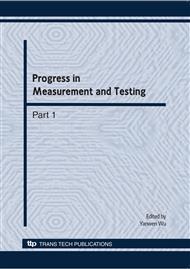p.195
p.201
p.207
p.211
p.216
p.222
p.228
p.234
p.240
Personalized Intelligent Information Retrieval Entrance Mechanism
Abstract:
In order to solve the problems of difficulties and differences in expression existed in traditional information retrieval, this paper presents a personalized intelligent information retrieval entrance mechanism based on domain ontology, which takes full account of various types of users' domain knowledge level and provide relevant retrieval methods for guiding personalized information, makes all kinds of users in a particular query environment can fully and effectively express their queries intentions.
Info:
Periodical:
Pages:
216-221
Citation:
Online since:
May 2010
Authors:
Price:
Сopyright:
© 2010 Trans Tech Publications Ltd. All Rights Reserved
Share:
Citation:


